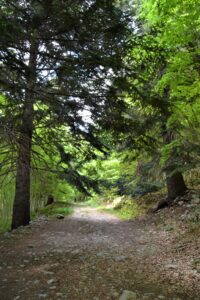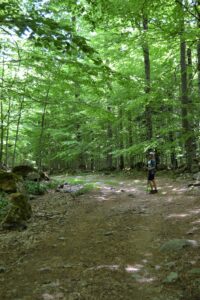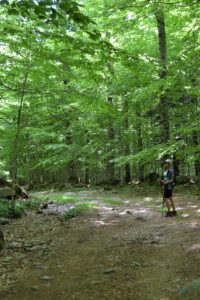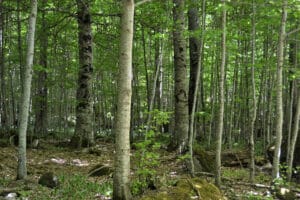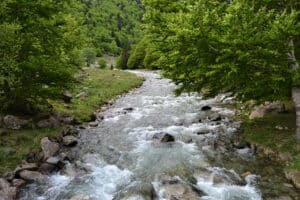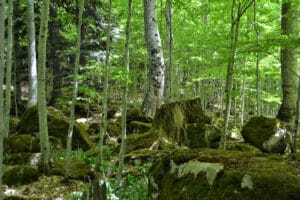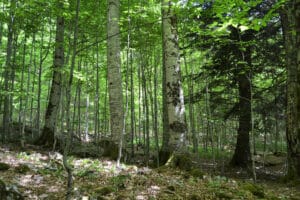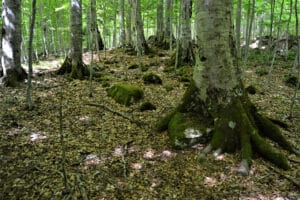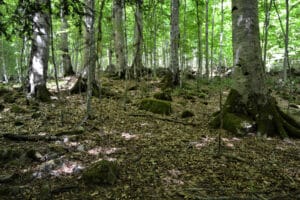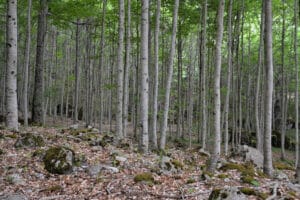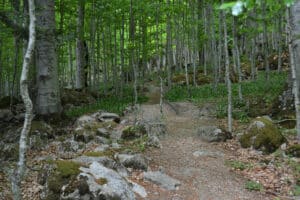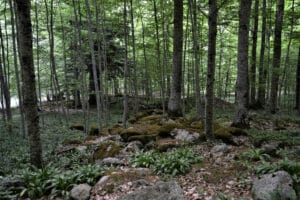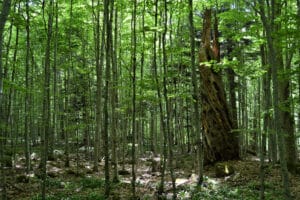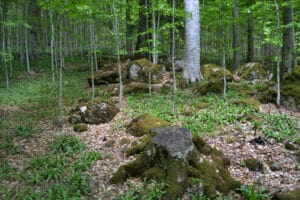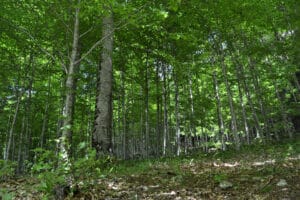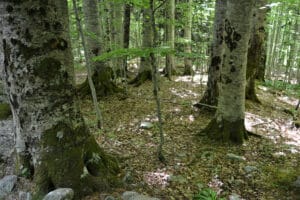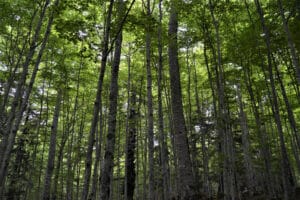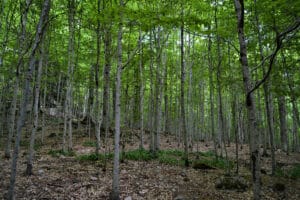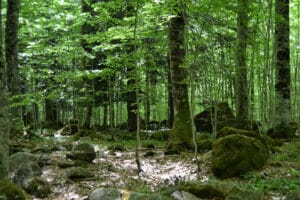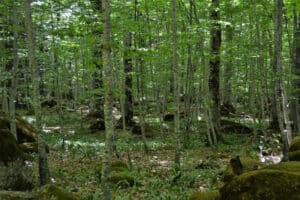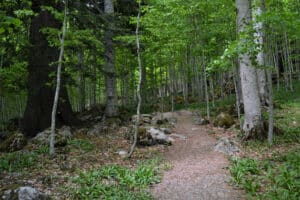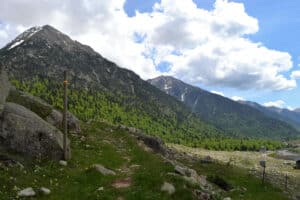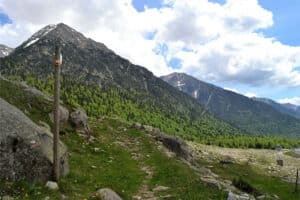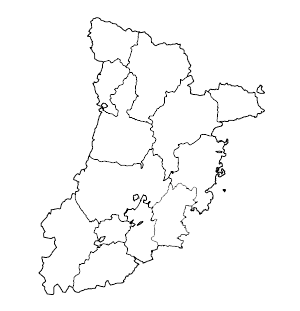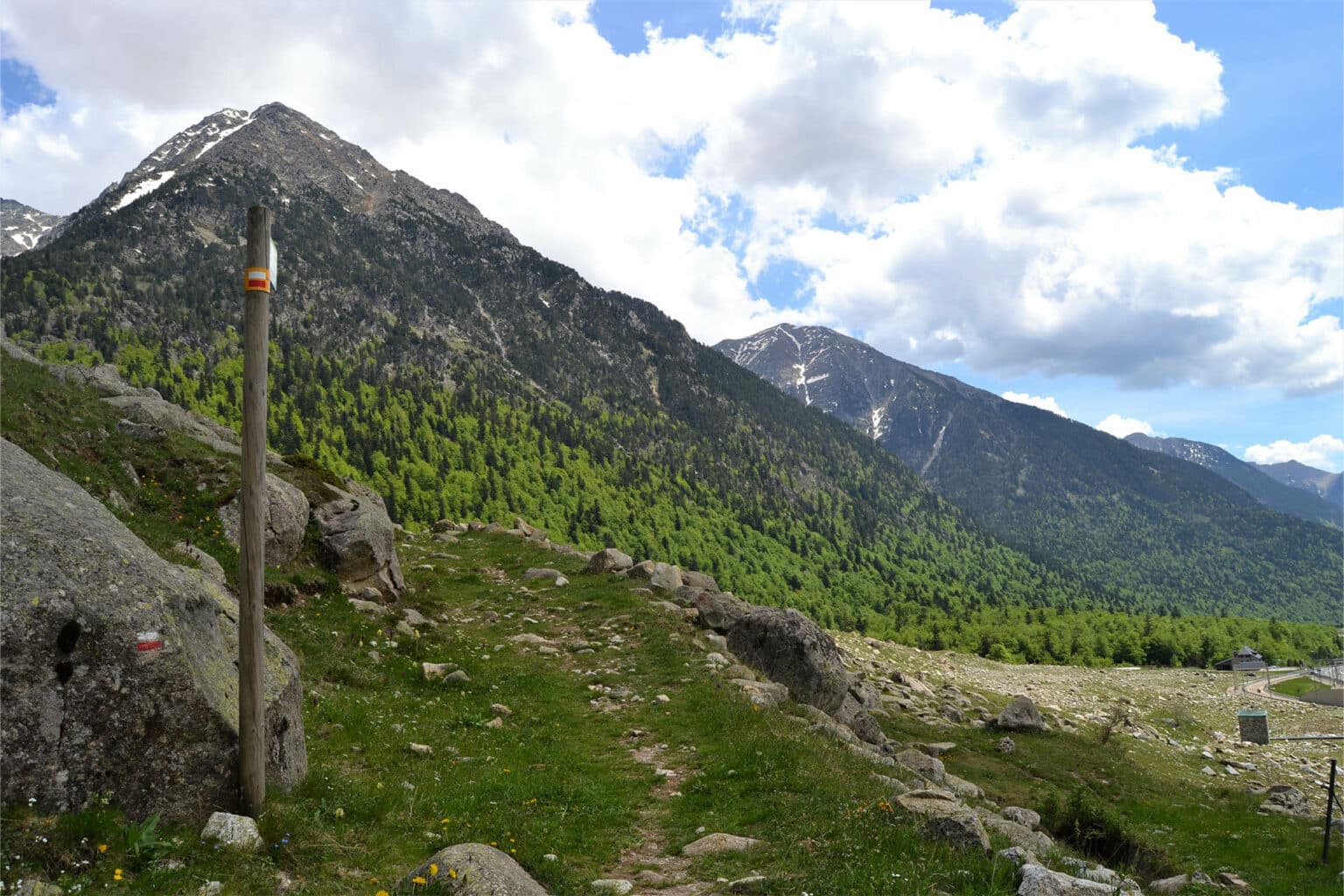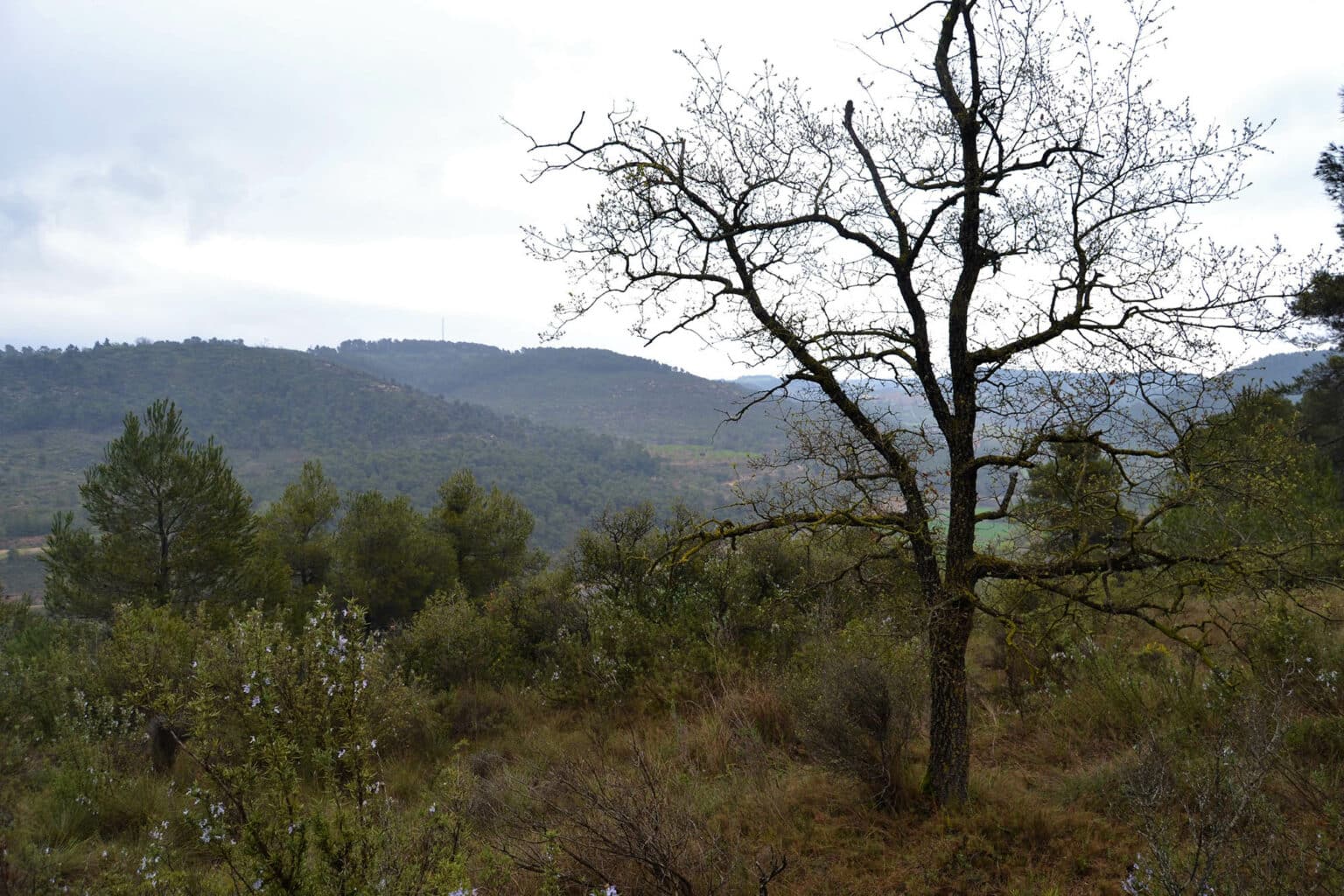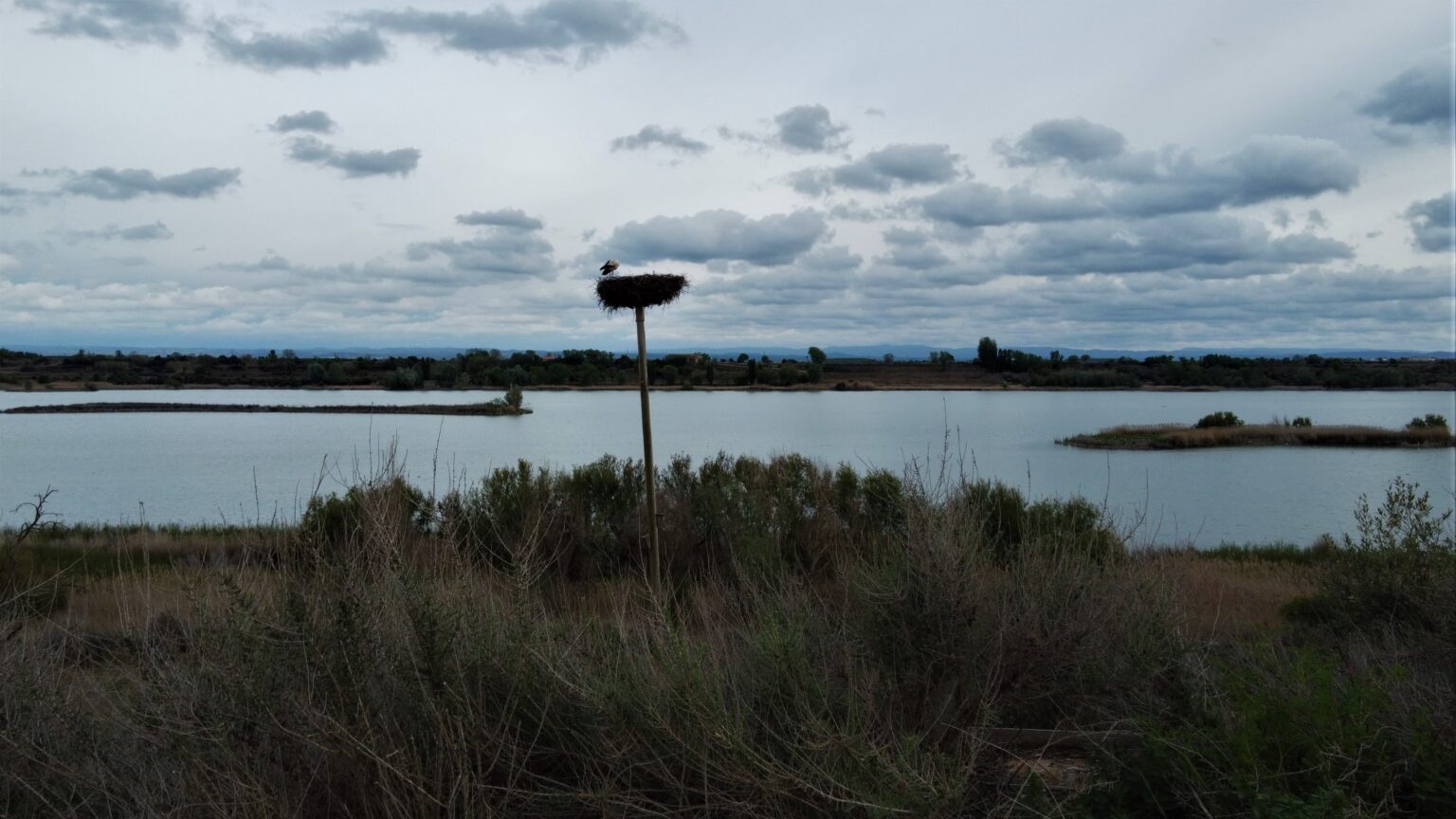FOREST BATHS
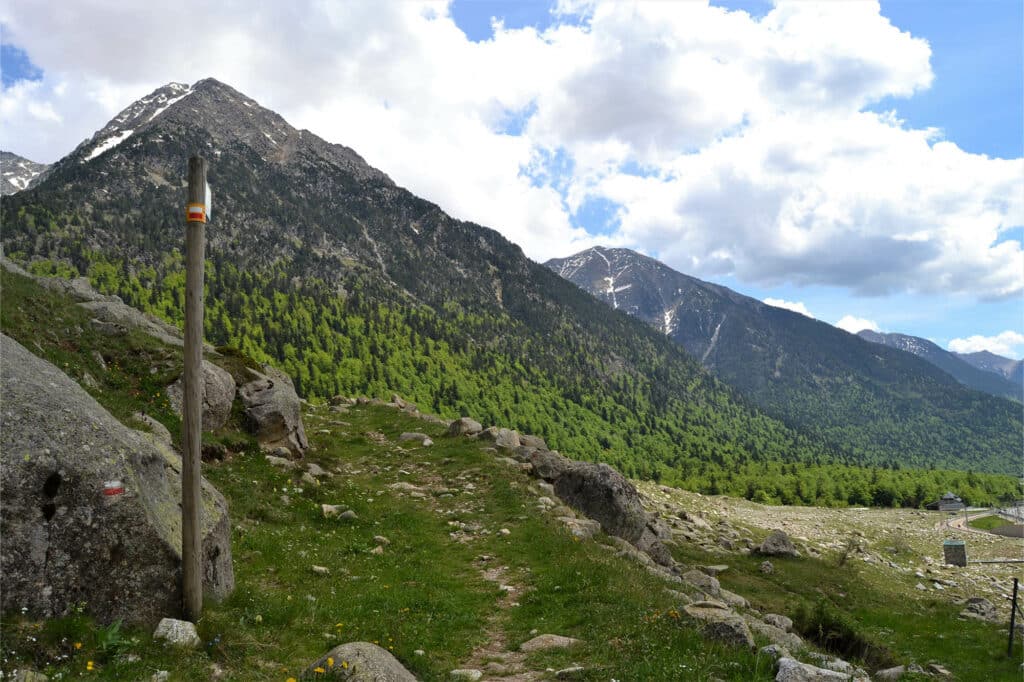
The profound sweetness of the beech grove of Conangles
Located in the extreme north-west of Catalonia, the Val d’Aran is the only comarca (local district) which is on the Atlantic-facing slopes of the Pyrenees. Its Atlantic climate has given it certain unique and outstanding characteristics, which most notably manifest themselves in its physical and climatic aspects, which have influenced its vegetation and the fauna that can be found there. This is a very large valley, with an area of 620 km2, where the headwaters of the River Garonne can be found. This river rises from either the Ratera-Saboredo cirque or in the La Maladeta massif and runs through the whole valley. It also contains the headwaters of the rivers Noguera Pallaresa and Noguera Ribagorçana, on its south and east sides. The peculiarities of the valley’s history have also helped to forge its unique character, which is closely linked to the mountain landscapes that are all around. About 30% of this territory is at altitudes of over 2,000 metres. It is surrounded by very high mountains and peaks, with narrow passes and communications that are conditioned by its harsh winter climate, while its exuberant nature is fascinating wherever it can be seen. Part of the valley lies within the Aigüestortes National Park.
Nature is the great protagonist in the Val d’Aran, which has over 370 kilometres of forest paths, more than 300 kilometres of signposted footpaths, and a great range of itineraries for alpinism. The Atlantic climate provides a high degree of humidity throughout the year, with plentiful rain and snow. The climate tends to be temperate, giving mild temperatures in summers, which tend to be predominantly cool. In terms of plant life, this climate has led to a proliferation of fir and beech forests in the shadiest areas, and of Scots pine and oak in the sunniest areas. There are also forests of Spanish pine, and alpine and subalpine meadows in the highest parts of the territory. In summary, the Val d’Aran is essentially an immense forest, with vegetation practically everywhere, in which it is possible to highlight a number of dense sunny or shaded forests, meadows, and places with intensely colourful flora, which are resistant to the demands of the climate. There are also immense outcrops of rock, which are typical of the Pyrenean Axial Zone. Furthermore, as the Pyrenees are very old and have undergone many changes in the course of their long history, the adaptation of the species that live there is a highly captivating topic. Observing the adaptation of various species to their environment is like contemplating a journey, from the past to the present, and requires understanding links and evolutions that not only affected the Pyrenees, but also other parts of the world, when borders were only geographical. For example, the gentiana (Gentiana alpina) and the rhododendron (Rhododendron ferrugineum) are species of arctic origin, while the Pyrenean violet (Ramonda myconi) is endemic to the Pyrenees. There are also several unique species, which are difficult to find. These include the black orchid (Nigritella nigra), which takes its name from its dark colour, wolf’s bane (Arnica montana), which is known for its therapeutic properties, and sundew (Drosera stenopetala), which is a carnivorous plant loved by insects.
With all of this, it is only to be expected that in practically any part of the Val d’Aran, you will find areas that are ideal for forest bathing; the territory offer a tremendous variety of forests and spaces from which to choose. On this occasion, the area proposed is the beech forest of Conangles, which is a forest that can be found next to the southern mouth of the Vielha tunnel. It is necessary to travel there by car and then leave your vehicle in the car park at Conangles, which is a large area which stands at an altitude of 1593 metres.
The space for forest bathing
The starting point is the Conangles mountain shelter. At the car park, it is already possible to appreciate the immense size of the forest and majesty of the wild and imposing mountains, whose colours vary with the seasons of the year. You will also note the relative coolness and humidity, and the noise made by the rushing waters of the nearby river. From the car park, it is necessary to cross the bridge over the River Noguera Ribagorçana and go to the mountain shelter, which is on the other side of the river. Once there, walk past the mountain shelter and towards the drying area. Then look for the vertical signage, which will show you the way to El Saut de Molières. Follow this signposted itinerary all the way; it is route 21 of the signposted footpath network.
At the beginning of the footpath, your first steps will take you into this natural palace. This is an immense beech forest, which is shady and intense, and one which will be able to awaken even the most dormant of senses with a single blow. As previously mentioned, the headwaters of the River Noguera Ribagorçana are influenced by the Atlantic climate and this has also fostered the development of beech trees, which require a lot of water. This is, in fact, a mixed forest of beech (Fagus sylvatica) and fir (Abies alba). It exhibits a dazzling greenness in spring and summer, with more toasted and warming tones of colour in autumn, thanks to its deciduous leaves. In winter, on the other hand, everything is often covered by a blanket of snow. The beech trees have developed tall, slender trunks, which are light in colour and they have smooth bark, which further emphasises their wide crowns. They have numerous, fine, oval-shaped leaves, amongst which their edible fruits are hidden, and they cause the air to murmur as the wind blows through their branches. One highlight in the middle of this beech forest is the presence of immense fir trees, of great height and diameter. The wood also contains many dead trees, with wood in different stages of decomposition. After only a few metres, the path leads to a wider track (corresponding to GR-11, which crosses all the Pyrenees) along which the circulation of all types of vehicles is strictly prohibited. After about another 500 metres, the composition of the forest starts to change: the beeches become more widely spaced, fir trees start to dominate, and wild waters bubble past. Then, the mountain cirque which houses El Tuc de Molières, which is the highest summit in the Val d’Aran, at an altitude of 3,010 metres, gradually comes into view. The alpine flora found here is surprising, and it is particularly abundant in spring. Its highlights include the Pyrenean squill (Scilla lilio-hyacinthus), herb Paris (Paris quadrifolia), green hellebore (Helleborus viridis), poet’s narcissus (Narcissus poeticus), and the great yellow gentian (Gentiana lutea). These is also very interesting selection of orchids which flower at different times of the year.
At about 1.2 kilometres from the Conangles mountain shelter, there is a bridge which crosses the waters of the River Conangles. After that bridge, and over to the left, stands the Centre for High-Mountain Research of the University of Barcelona. Your contemplative walk could end here, and you can go back along the same path to the mountain shelter. These 2.4 kilometres (out and back) have hardly any variation in altitude: the variation is very small and, from the very first moment, this route offers a magnificent space in which to connect with nature with all five senses. There are different ways in which to do this, and everyone probably has their own favourite way to focus on everything around them, when they are in the middle of the forest. You should do whatever best helps you to enjoy the experience, as you interact with nature. What most catches your attention? Which of your senses are most activated? Do you activate them yourself? How can you participate in this space? What sort of relationship can you establish here, and with this universe full of life, when you slowdown from your normal rhythm? Which emotions and feelings does the forest life awaken in you? These are just some of the questions to consider.
Alternatively, it is possible to go on, over towards the left, if you want to follow the GR as far as the Hospital de Sant Nicolau dels Pontells (the Espitau de Vielha mountain shelter). This was originally a hospital establishment that was built in the Middle Ages to attend to pilgrims and travellers who crossed the Viella mountain pass. Until this point, the path has been quite easy and, from here, it is possible to enjoy panoramic views presided over by El Tuc de Molières. From this point, it is possible to continue to El Saut de Molières (a walk of 9.2 kilometres, there and back, from the mountain shelter, with a variation in altitude of 315 metres). The path then climbs, initially following quite a wide route along the course of the Molières ravine. However, as the path climbs higher, it becomes narrower and enters another spectacular beech forest, before arriving at the waterfall. El Saut de Molières is fed by waters from El Tuc de Molières, which descend with tremendous power during the thaw period. It is well-worth visiting at any time of the year.
